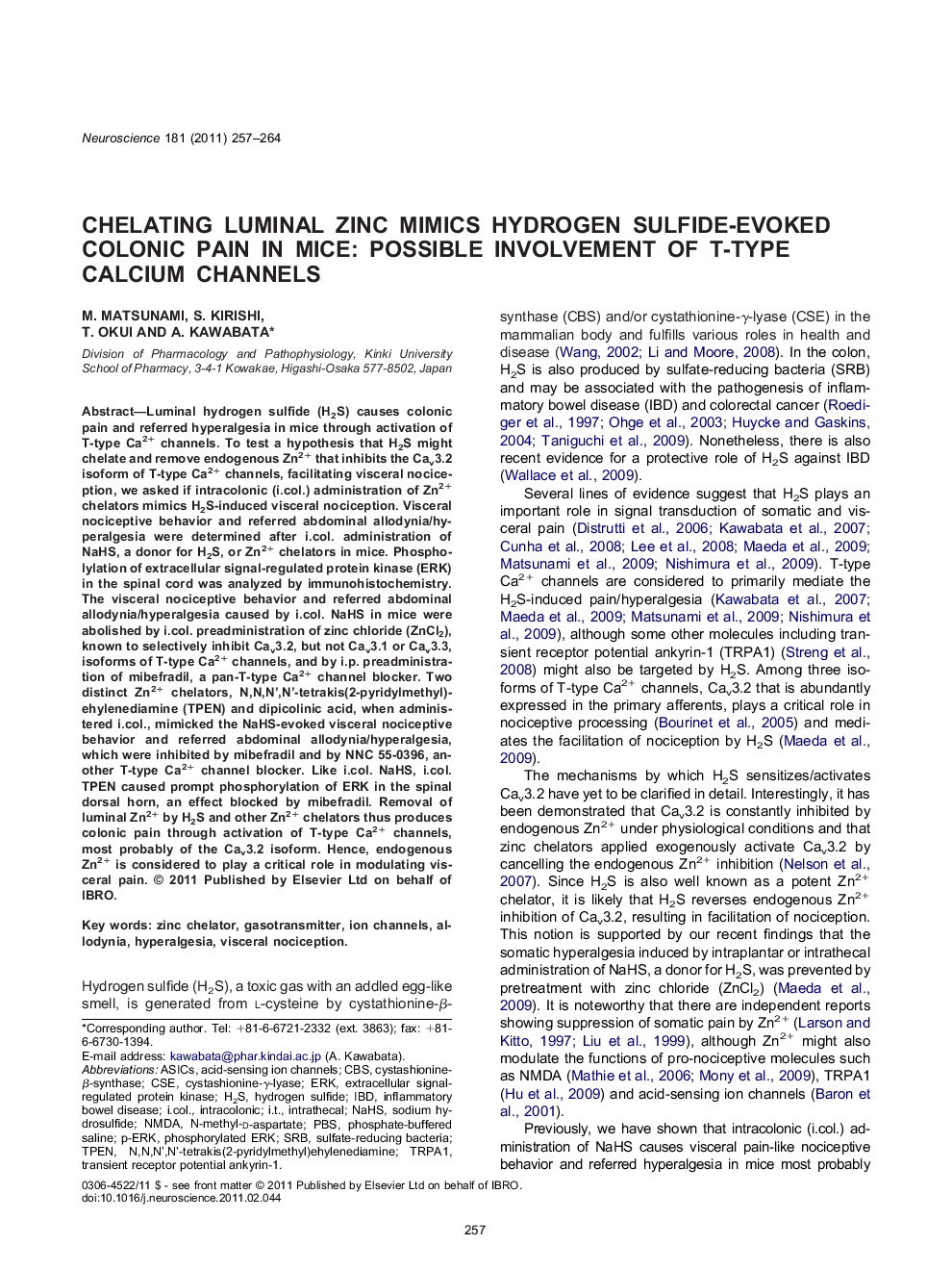| کد مقاله | کد نشریه | سال انتشار | مقاله انگلیسی | نسخه تمام متن |
|---|---|---|---|---|
| 4338928 | 1614895 | 2011 | 8 صفحه PDF | دانلود رایگان |

Luminal hydrogen sulfide (H2S) causes colonic pain and referred hyperalgesia in mice through activation of T-type Ca2+ channels. To test a hypothesis that H2S might chelate and remove endogenous Zn2+ that inhibits the Cav3.2 isoform of T-type Ca2+ channels, facilitating visceral nociception, we asked if intracolonic (i.col.) administration of Zn2+ chelators mimics H2S-induced visceral nociception. Visceral nociceptive behavior and referred abdominal allodynia/hyperalgesia were determined after i.col. administration of NaHS, a donor for H2S, or Zn2+ chelators in mice. Phospholylation of extracellular signal-regulated protein kinase (ERK) in the spinal cord was analyzed by immunohistochemistry. The visceral nociceptive behavior and referred abdominal allodynia/hyperalgesia caused by i.col. NaHS in mice were abolished by i.col. preadministration of zinc chloride (ZnCl2), known to selectively inhibit Cav3.2, but not Cav3.1 or Cav3.3, isoforms of T-type Ca2+ channels, and by i.p. preadministration of mibefradil, a pan-T-type Ca2+ channel blocker. Two distinct Zn2+ chelators, N,N,N',N'-tetrakis(2-pyridylmethyl)ehylenediamine (TPEN) and dipicolinic acid, when administered i.col., mimicked the NaHS-evoked visceral nociceptive behavior and referred abdominal allodynia/hyperalgesia, which were inhibited by mibefradil and by NNC 55-0396, another T-type Ca2+ channel blocker. Like i.col. NaHS, i.col. TPEN caused prompt phosphorylation of ERK in the spinal dorsal horn, an effect blocked by mibefradil. Removal of luminal Zn2+ by H2S and other Zn2+ chelators thus produces colonic pain through activation of T-type Ca2+ channels, most probably of the Cav3.2 isoform. Hence, endogenous Zn2+ is considered to play a critical role in modulating visceral pain.
▶Luminal H2S-induced colonic pain is blocked by zinc. ▶Specific zinc chelators, like H2S, cause colonic nociception. ▶Colonic pain induced by luminal zinc chelation is blocked by T-channel inhibition.
Journal: Neuroscience - Volume 181, 5 May 2011, Pages 257–264